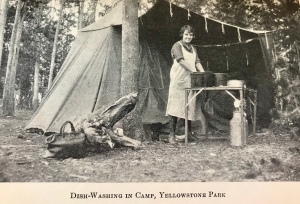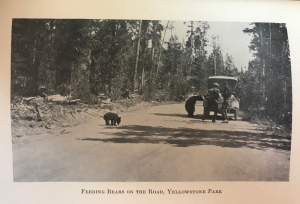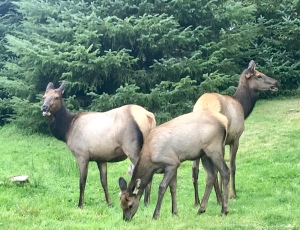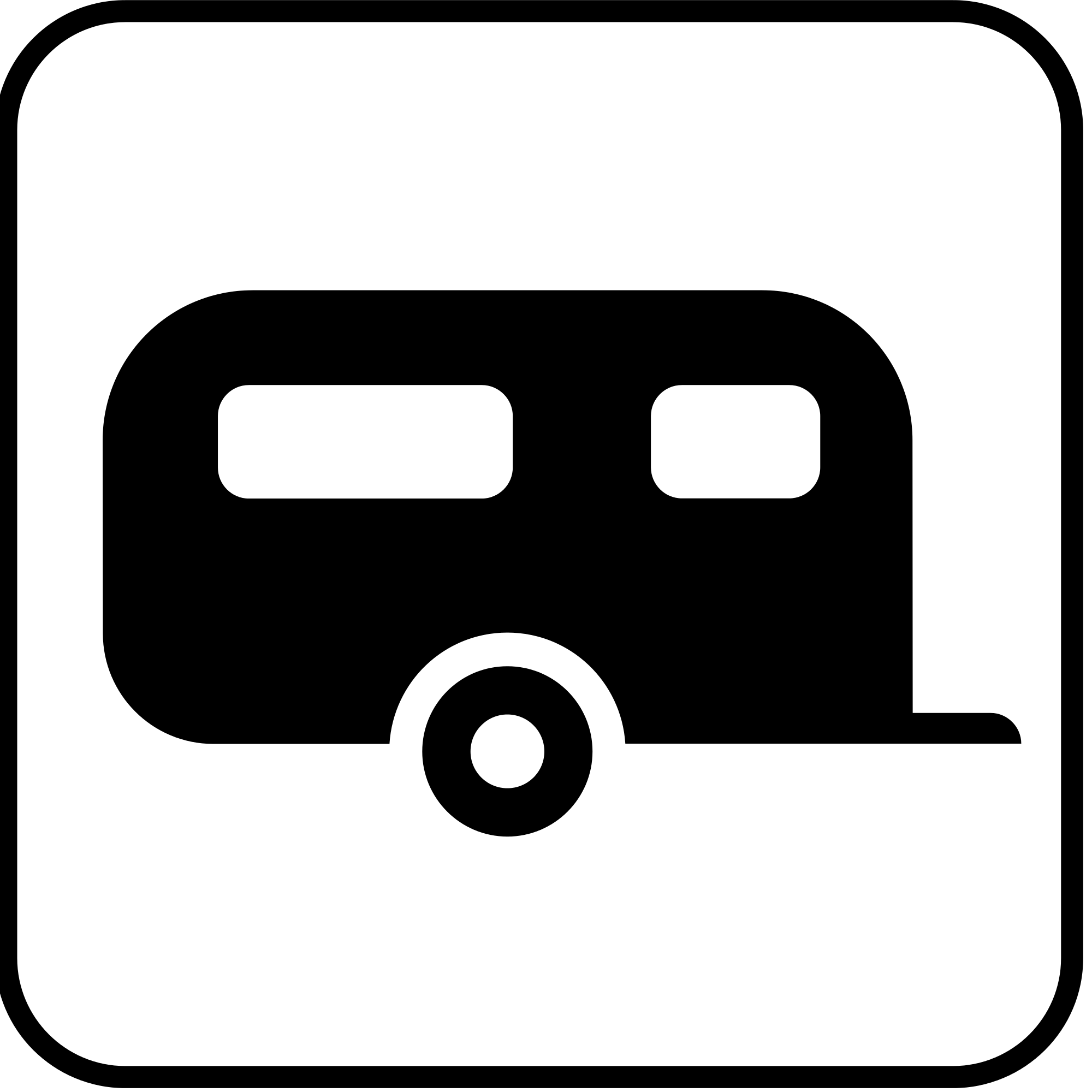A few months before we launched our Year on the Edges of America journey last March, I wrote a column for The Dallas Morning News explaining my love for reading good books set in places I’m visiting and asking readers what would be the best reading list for our travels.
I received nearly 1,000 book recommendations, so many that I struggled just to categorize them (my preliminary effort to do so is at the bottom of the column here), let alone read them.
One of the best recommendations came more than a year after the column ran – just this month, as it turns out – and in the form of a well worn, nearly 100-year-old book that fast friend Chris found in a rare-book store in Scottsdale, Arizona.

Modern Gypsies, by Mary Cehore Bedell, is the story of a couple who set out on “an automobile trip encircling the United States” in 1922. They spent months planning their adventure, allotted several months for the actual expedition, structured their route around the climate, camped along the way, reveled in the country’s natural wonders, weathered blowouts and marveled at the generosity of the American spirit from sea to sea.
Sound familiar?
The similarities to our own journey nearly a century later are uncanny. No wonder I inhaled the 262-page journal-travel guide in nearly a single sitting. I felt a special bond with Mary and Fred, their joy in adventure and discovery as familiar as the face in the mirror.
There were differences, of course.
Our cars, for example.

That’s their sturdy Hupmobile, which Bedell describes as unflinching in its acquisition of the 400-500 pounds of equipment they loaded it with and which at “the most trying moments throughout the trip behaved itself with the utmost decorum.”
Our beloved Nissan Xterra has behaved with similar grace so far throughout our trip, requiring little more than oil changes and tire rotations along the way.

The Bedells completed their trip in eight months; ours will be closer to 12. And they went clockwise to our counter-clockwise, choosing to compress their first leg from their home in upstate New York to Florida into three days of sailing (“our automobile stowed cozily away in the hold”) as the best way to get out of the Northeast on Feb. 1, their designated launch date.
(They loaded their fully equipped Hupmobile early in the winter “before the snow became deep” and drove it into New York City for storage. Weeks later – during the infamous storm that crushed the roof of the Knickerbocker Theater in Washington, killing 98 patrons – the Bedells “left home by train, the thermometer registering sixteen degrees below zero, with eighteen inches of snow on the ground.” The sail south wasn’t nearly as cold, Mary reports, though the boat’s “diabolical rolling” provided an altogether different sort of discomfort on this first leg of their journey.)
Their biggest travel day was 183 miles; ours was closer to 500.
Still, their route was remarkably similar to ours, in reverse. They stayed more inland in places than we did, owing to the lack of passable roads a century ago. She writes vividly of the muddy and rutted roads along the way, of the need to carry thick ropes with which to pull stuck cars – others’ and theirs – from cavernous chuckholes and hip-deep muck. (The Interstate Highway System was yet to be conceived, after all, and construction of the famed State Route 1 along the California coast was a good decade from start.)

But from the Everglades to Santa Monica, Glacier National Park to Niagara Falls, they visited many of the same places we did, experiencing them in more primitive form but with every bit equal exuberance.
Fred posing in Yucca, Arizona seems almost a mirror image of Georges posing not far away 96 years later in Yucca Valley, California.


Here’s their map, upon completion of their 12,000-mile trip.

Here’s our map, with the final leg of our 22,000-miles-so-far trip yet to be experienced.

Who were the Bedells?
I figured Fred and Mary were in their 40s or 50s at the time of their adventure, a bit younger, ahem, than Georges and I are for ours. I deduced this based on the fact that he’d been granted an extended leave from “his college work,” that they’d had “no long rest since a trip to Europe twelve years before,” and that they had two grown daughters. The elder daughter was working in Pasadena and joined them for part of the trip on the West coast; the younger was away at school and would join them for the final summer portion of the journey across the northern tier.
Later, upon googling about the book after I finished it, I realized that Frederick Bedell was a professor of physics at Cornell University and one of the founding members of the American Physical Society. His most important work, according to the university’s library, had to do with alternating currents, airplane performance and design, and devices to aid the deaf.
He and his wife were 54 and 52, respectively, at the time of their trip. She died 14 years later. He retired from Cornell the following year and ultimately moved to Pasadena, where he died in 1958 at age 90.
Their privilege comes through in the book on occasion, from the ease with which they are able to have their auto transported by boat or train across particularly difficult terrain to the joy Mary takes in her knickerbocker camping attire, which she laments would be entirely unacceptable in Eastern society back home.
Also indicative are Mary’s occasional references to “negroes” and “Indians,” intended, no doubt, to be kind and generous, but which to modern ears come across as uninformed and patronizing. At one point, she refers to a group of black children as “little piccaninnies” and describes early Catholic missionary work in California as a “high minded attempt of some great men to raise the Indian out of his ignorance and superstition.”
(The most potent political passage in the book, however, is her nearly full-page denunciation of the Ku Klux Klan, evidence of which they encountered several times during their trek across the South and into Arizona. They are “appalled” by its prevalence and she eviscerates the KKK for “taking the law into its own hands and wearing masks to prevent detection,” concluding: “Could anything be more cowardly or more at variance with our constitution?”)
There are other signs of the times. She is a stout defender of prohibition, crediting it for the absence of any examples of public drunkenness during their expedition and declaring at one point: “No one can make me believe that prohibition has not had a good effect on the country as a whole.”
But such discomfitures are few. What comes through in her writing is a sense of awe and admiration of the country’s natural beauty and for the grace and dignity of the people who live within it. She writes passionately, and with occasional wry humor, about the array of unexpected experiences and the kind and serendipitous souls they encounter along the way.
A hundred years makes a difference
In parts, I felt like I was reading excerpts of my own personal journal. But just as the passage of nearly 100 years seemed to melt away, I was jolted back to the reality of how dramatically times have changed, mostly for the better.
Here’s what their campsites looked like.


Here’s what ours looks like (near Shenandoah National Park in Virginia last May).

Sometimes the differences are grave.
Barely halfway into their trek, for example, in the deserts of Southern California, just south of what is now Joshua Tree National Park, Mary gets sick, very sick. Probably food poisoning, she speculates. She runs a fever. They camp, holing up for five days and five nights because she is too ill to move. Fred sleeps on the ground outside the car.
Eventually, they make it to Coachella, 60 miles away, where she checks into a hotel and sees a doctor. She then takes a sleeper car through to Pasadena more than 130 miles northwest, where she lands in a hospital, while Fred drives the car from Coachella to Pasadena, where their daughter lives. It takes three weeks of recuperation in Pasadena for Mary to recover her vigor.
There are references throughout the journey to water-quality concerns. Late in their trek, a daughter takes ill in North Dakota, “owing, we thought, to the poor water we had been obliged to drink.”
Georges and I each got sick precisely once (so far, fingers crossed) on our expedition and it had nothing to do with water quality. We popped decongestants, sucked on throat lozenges and practically gargled in Mucinex. Aside from an extra nap one day and skipping one museum we’d planned to visit the next, the complication delayed our trip not one bit.
Thank goodness for water-quality regulations and modern medicines.
Their Glacier National Park experience was both very different and very similar to our own. They traveled for miles in the park without encountering any other traffic – those days are gone! – and there was no road connecting the western side of the park to the eastern side. (There is now, though it was closed when we were there last August due to fire danger.)
The Bedells spent their time in the west side of park; fire restricted our visit to the east side. We – like they – found the views breathtaking, the hikes gorgeous, the wildlife mesmerizing. They camped at Lake McDonald, which they described as the choicest camping spot of their whole adventure. We drove within three miles of that very spot on our own Glacier visit.
We glimpsed glaciers; Fred climbed one. He scaled Sperry Glacier, probably still one of the largest glaciers in the park when they visited the park but which has shrunk more than 75 percent since the middle of the 19th century, from an estimated 930 acres to 216 acres in 2005.
Another difference: swimming attire. Mary is impressed by the pools and “plunges” at various tourist resorts in California, observing that the women in them “are not troubled with an excess of clothing, but usually wear the same style of suit that the men wear.”
Some things never change
In Venice, Mary references a town ordinance which prohibits people from walking around “in their bathing suits unless they have coats or robes thrown over them.” The rule isn’t well enforced, she observes, “for one meets walking on the sidewalks, gay throngs of people in their bathing suits with bathrobes thrown carelessly over their shoulders and flying open to the breezes, showing off the figure to as good advantage as if no robe were worn.”
So Venice Beach was bohemian even then.
At one point, she describes broiling steaks for several friends over a campfire in a beautiful canyon just inland from the California coast. They had to get a fire permit from one of the state troopers; apparently, California fire regulations go back at least a century.
Ditto regarding barely enforced environmental regulations. Describing the beauty of the white, bell-shaped Yucca blossoms, shaped like the bayonets for which they are named, Mary observes: “The authorities warn they are in danger of being exterminated, but the warnings are not very well heeded, we noticed.”
Fishing limits, too, existed back then. At Yellowstone National Park (too far inland for our perimeter trip; we’d visited it on an earlier trip), the trout limit was 12 per person. One person “over-supplied his own needs” and so shared much of his bounty with the Bedells, who savored the fire-roasted foot-long salmon and rainbow trout with friends they’d made at a previous campsite and been traveling with since.
Their views were sometimes obscured by smoke from uncontrolled forest fires. Their visibility issues began in Oregon; later, their view of Mount Rainer was obstructed in Washington State. Smoke clouded our visibility in Glacier National Park and later, nearly choked us coming through the Coquihalla Summit Recreation Area near Chilliwack in Canada on our way back into the States from Banff.
We were warned at several parks along our journey about the exquisite food-stealing skills of blue jays. Mary makes precisely the same observation.
“Why the goats do not break their slender legs jumping from rock to rock, as they do, is a great mystery to me,” Mary writes on page 200. I’ve often wondered precisely the same thing.
They got better bear pictures than we did; we saw more elk than they did.


They enjoyed ranger talks along the way, and on occasion, even full-scale entertainment, including music performances, dramatic readings and bonfire antics. We too reveled in ranger lectures; the performance of “Boxcars” at the Northern Sky theater in Wisconsin’s Peninsula State Park was a special highlight.
We have a map on the door of our Casita with each state we’ve visited carefully colored in to illustrate our travels. The Bedells are proud of the series of national park “discs” they accumulate on their windshield as they progress on their trip.
They had mail forwarded to various spots along the way, as did we. (One key difference: She used the telegraph to keep in more regular touch with her mother back home; I preferred to FaceTime my mother in Dallas. Another difference: Mary didn’t see her mother for the entire eight months they were away; we were blessed to have my mother join us for brief visits at five locations along our trek, courtesy of something called a commercial airline.)
She cites the low cost of living at many of the places they visit, marveling at paying just 10 cents for a dozen of eggs in one place and six cents for a dozen of fresh oysters in another, concluding: “If one has the time, a trip such as ours should cost no more than staying at home.” We’ve yet to finish our expense tallies, but this is an observation with which we expect to concur.
Romance, friendships, natural wonder
Much of what made the book read so sweetly to me were the similarities the Bedells evinced regarding their outlook on life.
Mary describes taking a trolley and funicular to visit a luxury hotel up Mount Lowe outside of Pasadena, where one can get a good dinner, but how they preferred – much as we do – to carry their own lunch and wander along the mountain passes until they “found a suitable place with an inspiring view, where we could be alone to enjoy the grandeur of the scenery all about us.”
They spent several weeks in Yosemite National Park campgrounds (a wonderful wilderness we’d experienced on an earlier trip), where she observed: “It is remarkable how quickly friendships spring up in such surroundings. With all the conventions of civilization reduced to a minimum, how much easier it is to estimate the real character of a person met casually in this way.”
Truth be told, Mary Crehore Bedell had me at hello.
A vacation, she writes at the very beginning of the book, is a precious thing, something “to be planned for with deliberation and careful thought, not only from the standpoint of gaining more physical vigor but with the idea of expanding the soul and of gaining a more intimate knowledge of the wonderful things with which this beautiful earth of ours is endowed.”
Amen.


Keven, would you please remind me what device or app you all used to get movies, TV, etc on the trip? We have been trying to figure out the best process for our next trip, going up the Mississippi River this Spring. Thanks!
LikeLiked by 1 person
Your trip sounds exciting! Love to hear more about it. We went pretty bare bones. We relied on our hotspot capabilities with our iPhones to watch movies via Vudu on our iPads. We also have a TV that we used to tap into local stations when possible. And we have a DVD player ti watch movies that way too, occasionally. We found this to be sufficient for rainy days or occasional late nights. Mostly, our attentions were on the out-of-doors. Hope that helps!
LikeLike
What an exciting book to read on your perimeter trip. So happy that this book crossed your path at exactly the right time.
LikeLiked by 1 person
Yes, it was special!
LikeLike
Just reading TRXAS HIGHWAYS February 2019 issue. Collectors Edition. BIG BEND NATIONAL PARK 75 YEARS.
Looking forward to your posts from there.
We spent three wonderful days there at the end of a 31 day 9200 mile road trip. Just enough to know we need to return for a longer stay.
Thanks for making it possible for us to travel with you.
LikeLiked by 1 person
Oooh, can’t wait to check out the Texas Highways issue you cite. We, too, love Big Bend. Celebrated several Thanksgivings there in the years after moving to Texas in 2002. Can’t wait to return. Will be writing from there in late February…. Thanks for being “along for the ride.”
LikeLike
I just love reading your stories and this one was especially encouraging knowing someone was able to almost take your same adventure in a model T a 100 years earlier!
LikeLiked by 1 person
Thank you, Brenda. It was such a fun read!
LikeLike
Kinda cool thinking that another adventurous couple will be reading YOUR book or blog one hundred years from now! 😘😘
LikeLiked by 1 person
Wow, I hadn’t thought if that. Yes, that would be cool indeed!
LikeLike
What a wonderful story! I particularly love the quote at the end of your post. So true!
LikeLiked by 1 person
Thanks, Madeleine! Her book was such a great read!
LikeLike
When will your book be coming out? Most of it is already written.
LikeLiked by 1 person
Ha! Love your confidence. Thanks so much, Bob, means a lot. I hope I can demonstrate that there’s an audience….!
LikeLike
What a real treasure of a book, Keven! You would have surely been good friends in another time.
Bob and I arrived in Tucson around 11:00 and look forward to seeing you tomorrow. I will be happy with WHATEVER is on the menu for dinner tomorrow, and if the tamales are too spicy for me, I’ll enjoy everything else. But what can we contribute? Salad, dessert, guacamole???
I know your time here is almost gone, so don’t feel you have to spend the day with us, unless you are feeling free and so inclined. WE are looking forward to seeing you both and catching up.
xo
Carolyn
LikeLiked by 1 person
Thank you, Carolyn, Yes, I think Mary and Fred must have been fascinating people! We are so excited to see you tomorrow. Please don’t feel you need to bring anything, unless you want to bring some wine or your favorite drink. Why don’t you come around 5:30? That will give us chat time before dinner and you can enjoy the view before the sun sets…. I will text you the address. You can practically walk!
LikeLike
Absolutely amazing that you would find this book from 1922!! And how fun to make all the comparisons. Thanks again for sharing the great joy you are experiencing on your trip. Love it!
LikeLiked by 1 person
Thanks, Ka! Credit goes entirely to fast friend Chris Thomas, who discovered the book and snagged it for us. What a pal. He’s a keeper!
LikeLike
That’s the subject of continuing debate, but I appreciate the vote of confidence. Safe travels, you two.
LikeLiked by 1 person
We’ll keep you even if Karen won’t…. But we love Karen too!
LikeLike
Liked the reading list. So what did you actually read on the trip?
LikeLiked by 1 person
I haven’t nearly as much leisure reading time on the trip as I expected. There’s always so much else to do, from hiking to cycling, bird watching and researching, map consulting, lecture attending, plotting the next day’s adventure, etc. So I’m embarrassed to admit that I’ve barely cracked my wonderful reader-built reading list.
But I’ve plenty of time to work on it in the future! In the meantime, I’ll list a few of my off-the-top-of-my-head favorites from the list here.
Somewhere along the Gulf Coast, I did finally finish “Blue Highways” by William Least Heat-Moon, which I referenced in a post last March. Loved it. And I’ve consulted “How the States Got Their Shapes” by Mark Stein regularly along the way, recommended by several readers and “Amazoned” to me by good friend Madeleine.
I very much enjoyed Jesmyn Ward’s National Book Award-winning “Sing, Unburied, Sing.” It’s set in Mississippi. At turns sad and hopeful, it was constantly creative and riveting.
And yes, I loved “Midnight in the Garden of Good and Evil” by John Berendt, set in Savannah, Georgia. Loved it so much, in fact, that I did a whole blog post on it. (See one of the posts from May.)
Two books not on the reader list that I enjoyed in their places of origin were Lisa Wingett’s “Before We Were Yours” set in South Carolina (and Tennessee) and the Pulitzer-winning “Less” by Andrew Sean Greene, which is set all over the world but based in New York City.
I went on a brief Nevada Barr kick, enjoying – as recommended – “Boar Island” while we were in Acadia National Park in Maine and “Blood Lure” in Glacier National Park in Montana.
I also enjoyed Pulitzer-winning “Prairie Fires: The American Dreams of Laura Ingalls Wilder” by Caroline Fraser, which I reveled in as we crossed the northern tier of the United States.
Leslie Brenner’s “Greetings from the Golden State” was an enjoyable read as we puttered around the LA area in October.
Next up? OMG, so much to choose from. I think I’ll take a breather while I decide….
LikeLike
Thanks, Keven. And I do understand the not having enough time to do it all. Isn’t retirement so much more active and entertaining than expected ! I do like J. Ward’s writing and Midnight … will definitely check out some others. Recommend Where the Crawdad’s Sing by Delia Owens to you. Just finished it. I like to read books that are about places I’m in too. But sometimes I scare myself. Like Death in the Grand Canyon and Sunk Without a Sound: The Tragic Colorado River Homeymoon of Glen and Bessie Hyde. Both fascinating for when you do a Postcards from the Interior. And why in the world did I read a book about all the ways bears kill people in Yellowstone while in a pop up camper in Yellowstone? Ahahaha
LikeLiked by 1 person
Did I by any chance see you on the river walk on Sunday?
LikeLike
How amazing! Hope y’all are well.
LikeLiked by 1 person
Thanks, Mary. We are. And hope you are too. We’ll start heading east late next week. Very excited!
LikeLike